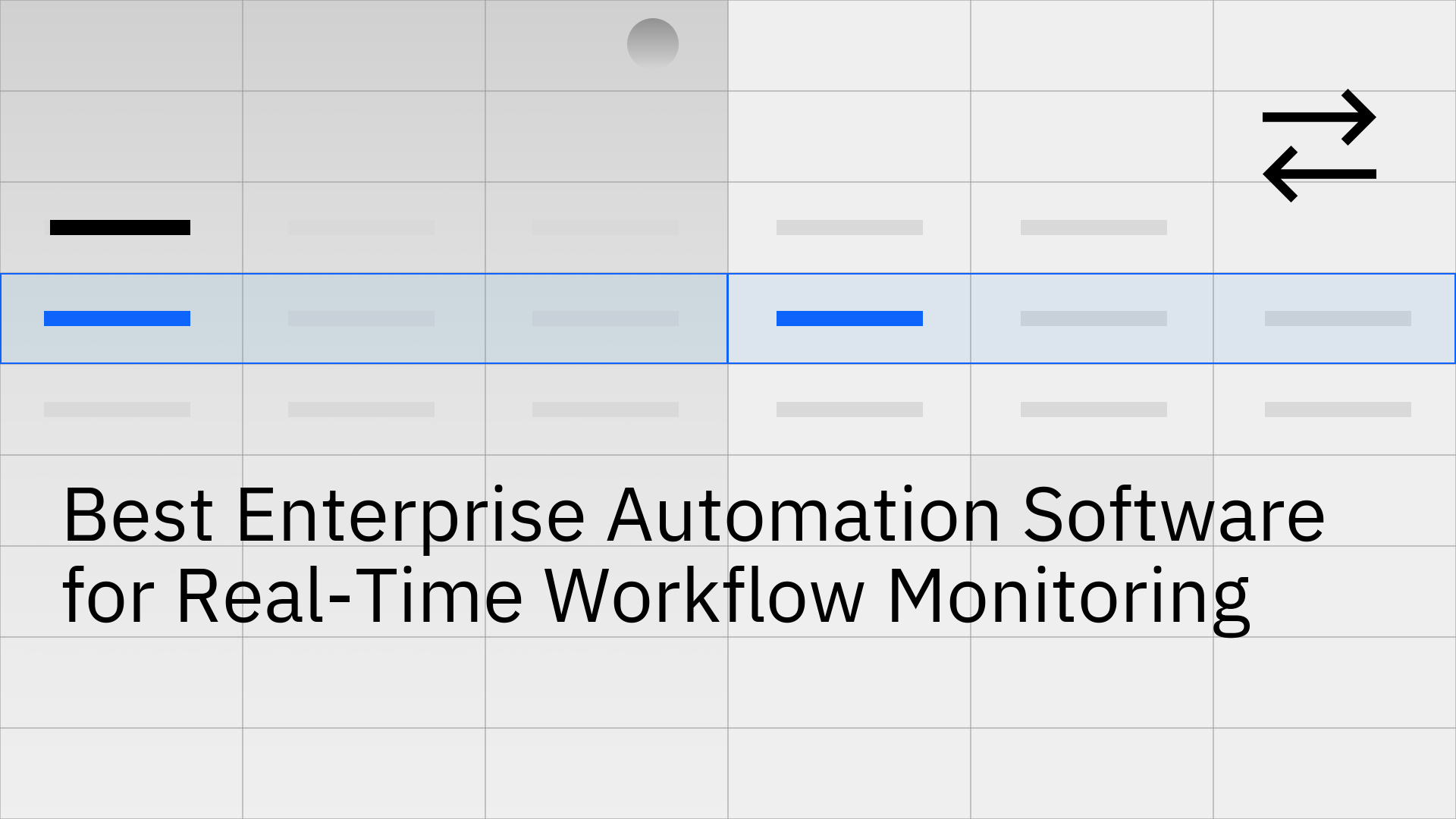
The best enterprise automation software must do more than automate tasks, it must ensure real-time workflow monitoring and reliable data sync across CRMs, ERPs, and databases. For enterprises, this means fewer manual errors, faster operations, and better customer experiences.
When automation is built on a foundation of latent or siloed data, it doesn't solve problems, it automates them, leading to operational failures, poor decision-making, and a compromised customer experience.
The fundamental problem is that most workflow automation platforms are designed for trigger-based actions, not for maintaining a persistent, synchronized state between mission-critical systems like CRMs, ERPs, and databases. This creates a significant gap for enterprises that depend on real-time data integrity for their core operations.
Enterprise automation platforms fall into four main categories, No-Code/Low-Code, iPaaS, RPA, and Developer-Centric tools. Each has strengths, but most struggle with real-time workflow monitoring and bi-directional sync, a gap Stacksync directly solves.
While these tools are powerful for specific tasks, they share a common architectural limitation: they are not purpose-built to guarantee real-time, bi-directional data consistency. An automation might fire correctly when a deal is updated in Salesforce, but if the corresponding customer record in a separate operational database is out of sync, the workflow operates on flawed data. This leads to cascading errors that are difficult to trace and resolve.
The core challenge in enterprise automation is the gap between triggered actions and continuous synchronization. While most platforms react to events, the best enterprise automation software ensures real-time monitoring and maintains synchronized states across systems.
Enterprises that rely on real-time operations—such as logistics, renewable energy management, or SaaS platforms—cannot afford the data drift inherent in trigger-based systems. A delay of even a few minutes between an order being placed in an ERP and the customer record updating in a CRM can lead to service failures. Building custom code to manage this bi-directional state is a significant engineering drain, consuming resources that should be focused on core product development.
To achieve reliable, real-time workflow automation, enterprises require a foundational data synchronization layer that guarantees data consistency before any workflow is executed. This is the specific problem Stacksync is engineered to solve.
Stacksync goes beyond traditional workflow automation. It acts as a foundational layer, combining real-time bi-directional synchronization with enterprise-grade workflow monitoring. This ensures every automation executes on a single source of truth, eliminating silent failures.
By providing a reliable data fabric across operational systems, Stacksync ensures that any automated workflow is triggered by and acts upon a single, consistent source of truth.
Stacksync addresses the technical limitations of traditional workflow platforms by focusing on the data layer first. It provides true bi-directional synchronization with sub-second latency, ensuring that systems like Salesforce, NetSuite, PostgreSQL, and Snowflake are always in perfect alignment.
Key Technical Differentiators:
By implementing Stacksync, an organization's approach to automation fundamentally changes. Instead of building complex, brittle workflows that must account for potential data latency, teams can build lean, efficient automations on top of a data layer they can trust.
Consider a workflow for calculating a customer's lifetime value (LTV) in real-time.
For enterprises where operational integrity is paramount, the choice of a workflow automation platform must extend beyond simple trigger-action capabilities. The primary consideration must be the platform's ability to ensure real-time data consistency across all connected systems. While many platforms can automate tasks, only a solution architected for true bi-directional synchronization can provide the reliable foundation required for mission-critical workflows.
For enterprises, choosing the best automation software means prioritizing real-time workflow monitoring and bi-directional sync. Stacksync delivers both, ensuring resilient, scalable operations built on reliable data. Start optimizing your workflows today with a platform designed for enterprise speed and consistency.